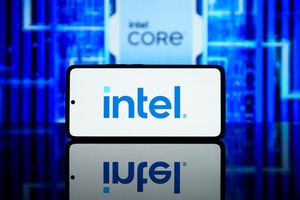
Microsoft is rapidly solidifying its position at the vanguard of the artificial intelligence revolution, orchestrating a multifaceted strategy that encompasses its robust Azure cloud platform, a pivotal strategic investment in OpenAI, and an ambitious conversion of its data centers into "AI fortresses." These concerted efforts are not merely about technological advancement; they represent a fundamental recalibration of the company's core business, aiming to meet and drive the explosive global demand for AI computing power. The immediate implications are profound, reshaping cloud computing, enterprise solutions, and the competitive dynamics of the tech industry, while setting new benchmarks for infrastructure investment and energy demands.
This aggressive pivot toward an AI-first future underscores Microsoft's intent to dominate the next era of digital transformation. By integrating advanced AI capabilities deeply into its product ecosystem, from productivity suites to operating systems, and by building the foundational infrastructure to support these innovations, Microsoft is positioning itself as an indispensable partner for businesses seeking to leverage AI. The market is keenly watching as these strategic moves promise to unlock unprecedented productivity gains, spark new waves of innovation, and intensify the global AI arms race, with Microsoft (NASDAQ: MSFT) emerging as a central and formidable player.
Microsoft's AI Gambit: A Deep Dive into Strategic Maneuvers
Microsoft's journey to becoming an AI powerhouse has been deliberate and aggressive, marked by substantial investments and strategic partnerships. At the heart of this transformation is Azure, its cloud computing platform, which has become the primary conduit for delivering scalable AI solutions to enterprises worldwide. Azure AI offers a comprehensive suite of services, including prebuilt and customizable models, studios, SDKs, and APIs, enabling businesses to quickly infuse generative AI into production workloads. This has led to remarkable adoption, with over 65% of Fortune 500 companies reportedly utilizing Azure OpenAI services, and more than 70,000 enterprises adopting agentic AI tools like Azure AI Studio and Copilot Studio. The results are tangible: companies like Eaton (NYSE: ETN) have achieved an 83% time savings on standard operating procedures, and Dentsu (TYO: 4324) has reduced analysis time by 80%.
A crucial element of this strategy is Microsoft's deep relationship with OpenAI. Initially a substantial investment—reportedly around 30% equity in the restructured OpenAI—this partnership has granted Microsoft preferential access to OpenAI's cutting-edge AI models, ensuring their integration into core Microsoft products like Azure, Microsoft 365 Copilot, and Bing. The OpenAI API notably runs exclusively on Azure and is available through the Azure OpenAI Service. However, this partnership is evolving. OpenAI has recently diversified its infrastructure, entering agreements with Oracle (NYSE: ORCL) and Google Cloud (NASDAQ: GOOG, GOOGL), signaling a move towards greater autonomy and control over its AI ecosystem, including ambitions in chip design and data centers (e.g., Project Stargate). This diversification, alongside a renegotiated revenue-sharing agreement where OpenAI will retain more revenue, suggests a recalibration from exclusive reliance to a "multi-vendor AI era."
Complementing these software and partnership strategies is Microsoft's monumental infrastructure push: the conversion of its data centers into "AI fortresses." The company has earmarked an unprecedented $80 billion globally for AI infrastructure in fiscal year 2025. This includes massive projects like a $7.3 billion investment in a Fairwater AI Datacenter in Wisconsin, equipped with advanced NVIDIA (NASDAQ: NVDA) GB200 chips for a 10x faster supercomputer. These "AI fortresses" are designed to overcome lingering capacity constraints and provide the foundational muscle for next-generation intelligent applications. They are significantly more energy-intensive than traditional data centers, requiring two to three times more electricity, prompting Microsoft to explore dedicated power sources, including nuclear and fusion energy, and to leverage AI for operational efficiency in power management. While there have been some temporary pauses or recalibrations in certain data center projects, the overall commitment to this vast infrastructure investment remains firm, reflecting the explosive demand for AI computing power.
The Shifting Tides: Who Gains and Who Risks Losing Out in the AI Era
Microsoft's aggressive AI strategy is creating distinct winners and losers across the technology and broader business landscape. Unsurprisingly, Microsoft (NASDAQ: MSFT) itself stands as a primary beneficiary. Its robust Azure cloud platform is experiencing accelerated growth, with AI services contributing significantly to its revenue and market share. The deep integration of AI across its product suite, from Microsoft 365 Copilot to AI-powered Windows PCs, enhances its competitive edge and customer stickiness. The initial market reaction to these announcements has generally been positive, with investors recognizing the long-term growth potential.
Beyond Microsoft, NVIDIA (NASDAQ: NVDA) is an undeniable winner. As the leading provider of the high-performance GPUs essential for training and running AI models, NVIDIA's technology underpins much of the AI infrastructure being built, including Microsoft's "AI fortresses." The massive investments in data centers directly translate into increased demand for NVIDIA's advanced chips. Another winner is Alphabet (NASDAQ: GOOG, GOOGL), through its Google Cloud division, and Oracle (NYSE: ORCL), both of which have recently secured deals with OpenAI for its diversified infrastructure needs. This suggests a recognition of their growing cloud capabilities and an opportunity to chip away at the dominance of established players in the AI infrastructure space.
On the other hand, traditional enterprise software providers who have been slower to integrate generative AI into their offerings might face significant challenges. Companies that rely on older, less AI-optimized infrastructure or those without a strong cloud presence could see their market share erode as enterprises flock to more advanced, AI-ready solutions. While not an outright "loser," OpenAI itself navigates a complex path. Its diversification away from exclusive reliance on Azure, while offering greater autonomy, also means it faces intensified competition from other cloud providers and an increased need to manage its own infrastructure and development costs. Speculation about its high cash burn and potential liquidity issues, as well as the evolving terms of its partnership with Microsoft, highlight the financial pressures inherent in leading the AI innovation race.
Furthermore, companies that fail to adopt or effectively integrate AI into their operations risk falling behind in productivity and innovation. The significant productivity gains reported by early adopters of Azure OpenAI services, such as Eaton and Dentsu, underscore the competitive disadvantage faced by those who delay. This creates an imperative for businesses across all sectors to invest in AI capabilities, driving a broader market for AI services and solutions, but also potentially widening the gap between technologically advanced firms and their less agile counterparts.
Industry Tremors and Broader Implications of the AI Gold Rush
Microsoft's AI-powered ascent is not an isolated event but a powerful current within broader industry trends, signaling a transformative shift across the entire technology ecosystem. The most significant trend is the accelerated move towards AI-as-a-Service (AIaaS), where access to sophisticated AI models and computing power becomes a utility, democratizing AI development for businesses of all sizes. Microsoft, through Azure OpenAI Service, is a leading proponent of this model, enabling rapid AI integration without massive upfront infrastructure investments for individual companies.
This intense focus on AI has significant ripple effects on competitors. Amazon Web Services (AWS) (NASDAQ: AMZN) and Google Cloud (NASDAQ: GOOG, GOOGL) are under immense pressure to match or exceed Microsoft's AI offerings and infrastructure investments. This has sparked an "AI arms race," particularly in the cloud sector, where securing AI talent, developing proprietary models, and building massive data centers are paramount. The diversification of OpenAI to include Oracle and Google Cloud as infrastructure partners indicates a strategic move by OpenAI to avoid single-vendor lock-in, but it also reflects the growing capabilities and competitiveness of these alternative cloud providers. This competition is beneficial for customers, as it drives innovation, efficiency, and potentially more favorable pricing models.
Regulatory and policy implications are also emerging as a critical consideration. The sheer scale of investment in AI infrastructure, coupled with the increasing power consumption of "AI fortresses," brings environmental and energy policy to the forefront. Governments and regulatory bodies are beginning to scrutinize the energy footprint of AI, prompting tech giants like Microsoft to explore sustainable energy solutions, including nuclear and fusion power. Furthermore, the concentration of AI power in a few dominant tech companies raises antitrust concerns and calls for responsible AI development, data privacy, and ethical guidelines. Discussions around AI governance, potential job displacement, and the need for new skill sets are becoming more prominent on the global stage.
Historically, this era of intense technological advancement and infrastructure build-out echoes the dot-com boom of the late 1990s or the early days of cloud computing. Like those periods, the current AI gold rush is characterized by massive capital expenditure, rapid innovation, and a scramble for market dominance. However, the scale and foundational nature of AI—its potential to revolutionize nearly every industry—suggest an even more profound and long-lasting impact. The current drive to build "AI fortresses" can be compared to the laying of transcontinental railroads or the establishment of national electricity grids in their respective eras, critical infrastructure that unlocks entirely new economic possibilities.
The Road Ahead: Navigating the Evolving AI Landscape
Looking ahead, the short-term will likely see a continued acceleration of AI integration across enterprise applications and consumer devices. Microsoft's deep embedding of AI into Windows PCs and Microsoft 365 Copilot suggests that AI will become an invisible yet pervasive layer in daily work and personal computing. We can anticipate further enhancements to Azure's AI services, more sophisticated pre-trained models, and easier tools for developers to create custom AI solutions. The competitive landscape will intensify, with AWS, Google Cloud, and other players racing to roll out equally compelling and powerful AI offerings. The challenge for Microsoft will be to maintain its lead amidst this fierce competition, continuing to innovate while ensuring the reliability, security, and ethical deployment of its AI technologies.
In the long-term, the strategic implications are even more far-reaching. The "AI fortresses" represent a commitment to foundational infrastructure that will support not just current AI models but also future, more advanced iterations. This investment hints at a future where AI computation is even more distributed, powerful, and possibly self-sustaining, perhaps even leading to entirely new paradigms of computing. We might see an increased focus on specialized AI hardware beyond GPUs, as well as advancements in quantum computing or neuromorphic chips that could further accelerate AI capabilities. This could also lead to a decentralization of AI model development, as more companies gain access to powerful computing resources, fostering a more diverse and innovative AI ecosystem.
Potential strategic pivots or adaptations required for Microsoft and its competitors will involve navigating the evolving regulatory landscape, particularly concerning energy consumption and data governance. Companies will need to invest heavily in carbon-free energy solutions and robust cybersecurity for their AI infrastructure. Market opportunities will emerge in specialized AI applications, AI ethics and governance consulting, and the development of new AI-powered business models. Challenges will include managing the immense power demands, attracting and retaining top AI talent, and addressing public concerns around AI's societal impact.
Potential scenarios and outcomes include a future where AI-powered automation transforms industries, leading to unprecedented productivity gains but also requiring significant societal adjustments regarding workforce retraining. Another scenario could see a few dominant AI platforms emerge, raising concerns about market concentration, or alternatively, a more fragmented AI ecosystem driven by open-source innovation and specialized niche players. Investors should closely watch for continued growth in Azure's AI revenue, Microsoft's ability to maintain its strategic advantage with OpenAI and other AI partners, and its progress in developing sustainable energy solutions for its AI fortresses.
Conclusion: Microsoft's Enduring Bet on the AI Future
Microsoft's comprehensive strategy—leveraging Azure's scalable AI solutions, its strategic yet evolving investment in OpenAI, and the monumental transformation of its data centers into "AI fortresses"—marks a defining moment in the company's history and the broader technology landscape. The key takeaway is Microsoft's unwavering commitment to an AI-first future, recognizing that artificial intelligence is not merely a feature but the foundational layer for the next generation of computing. This aggressive stance has already yielded significant market gains, particularly for Azure, and has solidified Microsoft's position as a frontrunner in the global AI race.
Moving forward, the market will continue to be shaped by the interplay of innovation, competition, and regulatory scrutiny. Microsoft's ability to seamlessly integrate AI across its vast product portfolio will be critical to sustaining its momentum. The evolving dynamics of its partnership with OpenAI, alongside the competitive responses from rivals like AWS and Google Cloud, will dictate the pace and direction of the AI industry. Furthermore, the immense energy demands of AI infrastructure will necessitate continued innovation in sustainable power solutions, pushing the boundaries of green technology.
Ultimately, Microsoft's AI-powered ascent is more than a corporate success story; it's a blueprint for navigating the complexities and seizing the opportunities of the AI era. Investors should meticulously track the company's R&D investments, its strategic partnerships, and its progress in addressing the societal and environmental implications of its AI endeavors. The coming months will undoubtedly reveal further advancements, challenges, and transformations, reaffirming AI as the most significant technological paradigm shift of our time, with Microsoft at its very core.







